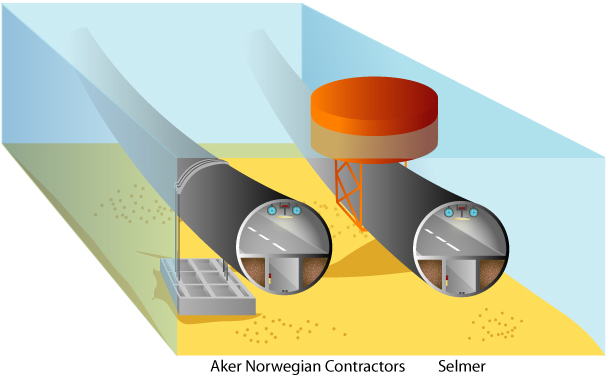Why? This is a connection between East Asia and North America at its heart. If you want to send people then planes are faster, it would take forever to go by train, even high speed rail and that would be prohibitively expensive. If you want to ship goods then ships are already better. Perishable and high value goods are going by planes in any case. It is a cool concept but I don't see any way where it would make sense other than as a prestige project.
Ships aren't always better...the reason for the rise of transcontinental double stack trains is the desire to offload as much as possible for rail transfer at the nearest economical port. Oddly, Los Angels is about as far as you can get, but US Pacific coast ports north of there seem to have been caught napping and are playing perennial catch up. Now, if that transshipment were completely eliminated? Some butterflies:
Canadian railroads are going to capture a
huge amount of money from the traffic of US imports from China. Not only will they be carrying freight south from Alaska but the haul to eastern/midwestern US markets will be even more lucrative. My guess would be that Toronto will be the main point of entry for traffic to the NE US and eastern seaboard. Imports to Chicago and the states of the lower Ohio and lower Mississippi valley states will probably be either via Detroit (for Canadian National) or Minneapolis or Chicago (for Canadian Pacific). This takes away the tremendous container traffic that boosted western US rail revenues, while leaving eastern carriers unchanged for the most part. What does this do to the Santa Fe, which is the predominant LA-Chicago route for import containers? Where does this leave the port of Los Angeles/Long Beach?
Conversely, Chinese imports via Canada going to west coast destination (such as the huge metropolitan areas of San Francisco Bay area, and the Los Angeles sprawl) are going straight down the coast. Here's where that gets interesting:
-If interchange is going to be at Vancouver, BC, the Burlington Northern has connections but has to work with the Western Pacific and the Santa Fe to route traffic to SF/LA. Does this keep WP out of UP's grip? Does this help or hurt the idea of the SF+BN merger?
-The Union Pacific has interchange with the Canadian Pacific
via the Spokane International Railroad. But UP's route to the south would be Eastport-Spokane-Hinkle-Ogden-Los Angeles. A long way 'round, with a lot of mountains. Does this push the UP into buying WP for backdoor access to northern California markets?
-The Southern Pacific would seem to have it made, with extensive trackage and terminals all over the Los Angeles and San Francisco Bay areas. No one is going to be better set to deliver and distribute the imports from the world's second largest economy for delivery and distribution to the world's sixth largest-by the trainload. Except...the SP goes no further north than Portland, OR. There is no way that BN will (voluntarily) give it trackage rights to reach Canadian interchange. That could be an interesting legal/regulatory fight.
